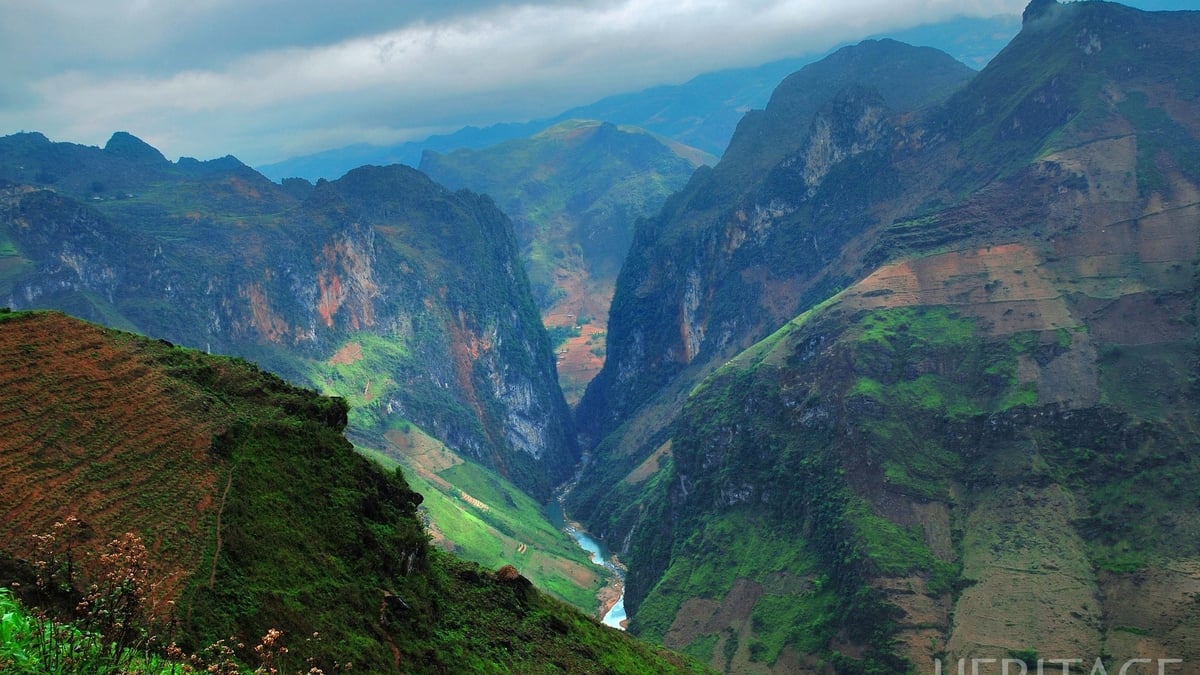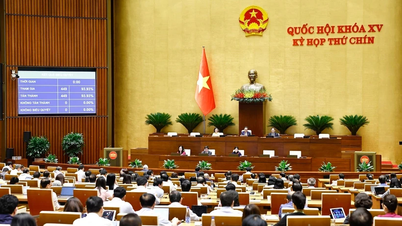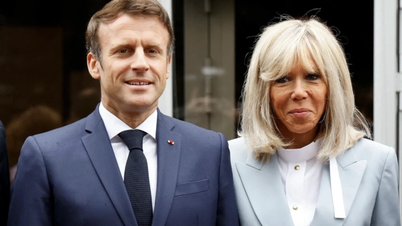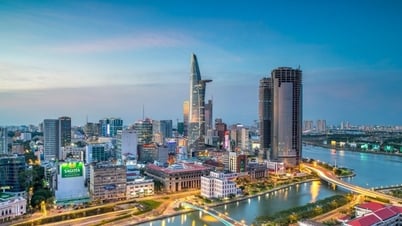Natural disasters and fires occur in many countries.
*Earthquake in Nepal: According to the latest report from Nepalese authorities, the death toll from the earthquake that occurred on the evening of November 3 in the western mountainous region of the country has reached at least 157. Currently, security forces have quickly arrived at the scene to assist rescue workers in searching for missing people in the rubble near the epicenter of the earthquake.
Security forces have been deployed both on land and in the air to assist in the search and rescue effort. However, the rescue effort is facing many difficulties because many roads leading to the affected areas were destroyed in the earthquake. Meanwhile, local hospitals are overloaded with injured people being brought in for emergency treatment.
According to the United States Geological Survey (USSG), earthquakes in Nepal are relatively shallow, tending to cause more damage and aftershocks than earthquakes that occur deep below the Earth's surface.
*Ethiopia floods: More than 20 people have died and more than 12,000 families have been displaced in the Somali region of Ethiopia due to severe flooding following heavy rains. Somali authorities said many bridges and roads had been destroyed by the torrential rains. Crops and livestock, along with many properties, were damaged. Rescuers had difficulty reaching affected households. “Rains are increasing and the forecast suggests the risk of flooding remains high,” the authorities said in a statement.
*Hurricane Otis in Mexico: On November 1, Mexican Finance Minister Rogelio Ramirez De La O said that the government has just approved a financial aid package worth 61.3 billion pesos (3.4 billion USD) to rebuild the coastal tourist city of Acapulco, Guerrero state, which was devastated by superstorm Otis last week. Superstorm Otis killed 46 people and 58 people are missing; caused economic damage of 15 billion USD. About 273,000 houses, 600 hotels and 120 hospitals were damaged, many restaurants and businesses were devastated by the storm. Hurricane Otis is considered one of the strongest storms to hit this Latin American country in 30 years.
* Fire in Iran: At least 32 people were killed and 16 others injured in a major fire that broke out on the morning of November 3 at a drug rehabilitation center in the city of Langarud in the northern province of Gilan. According to the deputy governor of the province, initial investigation results showed that a heating device at the center was the source of the fire, but did not specify.
Risk of spreading conflict in the Middle East
The bloody conflict between Israel and Hamas must be ended immediately to prevent it from spreading to the entire Middle East, Russian Permanent Representative to the United Nations Vasily Nebenzya warned during a special session of the United Nations General Assembly on November 2.
Tensions in the Middle East have escalated sharply after Hamas launched surprise attacks from the Gaza Strip into Israel. Hamas saw this as a response to recent Israeli actions against the Al Aqsa Mosque on the Temple Mount in Jerusalem. In response, Israel declared a complete blockade of the Gaza Strip and began carrying out attacks on the enclave as well as some areas in neighboring Lebanon and Syria. Fierce clashes between Hamas and Israeli forces continue in the West Bank.
The Hamas-Israel conflict has entered its fifth week with no signs of abating. Health authorities in the Gaza Strip reported on November 4 that at least 9,488 Palestinians, including about 3,900 children, have been killed. According to Israeli figures, the country has recorded about 1,400 deaths, mostly civilians, and about 240 people have been taken hostage.
Meanwhile, according to preliminary figures, between 800,000 and 1 million Palestinians have moved to southern Gaza while about 350,000-400,000 remain in the northern area.
The UN Office for the Coordination of Humanitarian Affairs (OCHA) has appealed for $1.2 billion in emergency funding to help 2.7 million people in the Gaza Strip and the West Bank. This figure is a sharp increase from the $294 million appeal OCHA made on October 12 to help nearly 1.3 million people. According to the organization, the situation has deteriorated significantly since then.
Tensions escalate in relations between Belarus and Poland
On November 3, the Belarusian Foreign Ministry announced that it had summoned the Polish Charge d'Affaires, Martin Wojciechowski, after claiming that a Polish plane had violated the Belarusian state border.
The announcement on the website of the Belarusian Ministry of Foreign Affairs stated: "On November 3, the Charge d'Affaires of the Republic of Poland to the Republic of Belarus, Mr. Martin Wojciechowski, was summoned to the Ministry of Foreign Affairs. During the meeting, the Polish diplomat was informed of the strong protest regarding the violation of the state border of the Republic of Belarus by a plane from the Republic of Poland on November 2." Belarus demanded a thorough investigation of the incident and effective measures to prevent similar cases in the future.
Relations between Belarus and Poland have become increasingly tense after Minsk on September 1 accused a Warsaw military helicopter of violating Belarusian airspace. On the same day, the Belarusian Foreign Ministry said it had summoned the Polish charge d'affaires in Minsk to demand a satisfactory explanation from Poland and a thorough investigation into the incident.
Relations between Belarus and Poland, which have been frozen for years, have continued to fall to a new low. In early August, the Polish Ministry of Defense announced that it would increase its troop deployment to its eastern border with Belarus after two Belarusian helicopters violated Polish airspace. However, the Belarusian military denied the accusations and said that Poland was "making up excuses" to justify the increase in troops and vehicles at the border between the two countries.
Global travel and tourism faces environmental challenges
The global travel and tourism industry is facing a major environmental challenge as its greenhouse gas emissions continue to rise, World Travel and Tourism Council (WTTC) CEO Julia Simpson warned at the 23rd WTTC Global Summit on November 2 in the Rwandan capital Kigali.
At the conference, Ms. Simpson said that transportation is the largest source of greenhouse gas emissions, accounting for about 40% of the total emissions of the industry, followed by energy consumption, especially electricity consumption, accounting for about 20%. To minimize the impact of the travel and tourism industry on the environment, she called on industry leaders to prioritize the development of electric vehicles and the production of sustainable aviation fuel (SAF).
Greenhouse gas emissions from the trillion-dollar “smokeless industry” are rising rapidly, driven largely by demand for energy-intensive air travel. In 2019, before the COVID-19 pandemic, the travel and tourism industry accounted for 8.1% of global emissions.
The 23rd WTTC Global Summit took place over three days from 1-3 November to discuss the future of the global travel and tourism industry. The conference attracted more than 1,000 delegates, including many heads of state, policy makers, government officials, tourism industry leaders and environmental activists from around the world.
This is the first time WTTC has held a global summit in Africa.
Eurozone at risk of falling into recession
On October 31, the European Union Statistical Office (Eurostat) released economic growth data for the Eurozone showing that the Eurozone economy is at risk of falling into recession by the end of this year after the region recorded negative growth in the third quarter of 2023.
Specifically, the data shows that the economy of the 20 countries in the Eurozone contracted by 0.1% in the third quarter of 2023, after shrinking by 0.2% in the second quarter. This figure shows the economic difficulties that the Eurozone is facing, including the cost of living crisis and concerns about falling global demand.
Eurostat data also showed that Eurozone inflation fell to 2.9% in October from 4.3% in September, below the forecast of over 3%. The October inflation rate was the lowest since July 2021 when inflation was recorded at 2.2% and down from a peak of 10.6% in October last year after the Russia-Ukraine conflict pushed up energy prices.
Energy prices continued to fall sharply in October, falling by 11.1% after falling 4.6% in the previous month, according to Eurostat. The price increase for food and beverages also slowed, rising by 7.5% in October compared to 8.8% in September.
The European Central Bank (ECB) expects the eurozone economy to grow just 0.7% this year, 1% in 2024 and 1.5% in 2025.
Last week, the ECB kept interest rates unchanged, breaking a streak of 10 consecutive rate hikes after Eurozone inflation fell sharply in September and evidence of economic weakness./.
Source link



![[Photo] Prime Minister Pham Minh Chinh receives Rabbi Yoav Ben Tzur, Israeli Minister of Labor](https://vphoto.vietnam.vn/thumb/1200x675/vietnam/resource/IMAGE/2025/5/21/511bf6664512413ca5a275cbf3fb2f65)

![[Photo] Scientific workshop "Building a socialist model associated with socialist people in Hai Phong city in the period of 2025-2030 and the following years"](https://vphoto.vietnam.vn/thumb/1200x675/vietnam/resource/IMAGE/2025/5/21/5098e06c813243b1bf5670f9dc20ad0a)
![[Photo] Prime Minister Pham Minh Chinh receives the President of Asia-Pacific region of PowerChina Group](https://vphoto.vietnam.vn/thumb/1200x675/vietnam/resource/IMAGE/2025/5/21/0f4f3c2f997b4fdaa44b60aaac103d91)
![[Photo] Coming to Son La, let's "show off" with the Wallflowers](https://vphoto.vietnam.vn/thumb/1200x675/vietnam/resource/IMAGE/2025/5/21/627a654c41fc4e1a95f3e1c353d0426d)





















































































Comment (0)